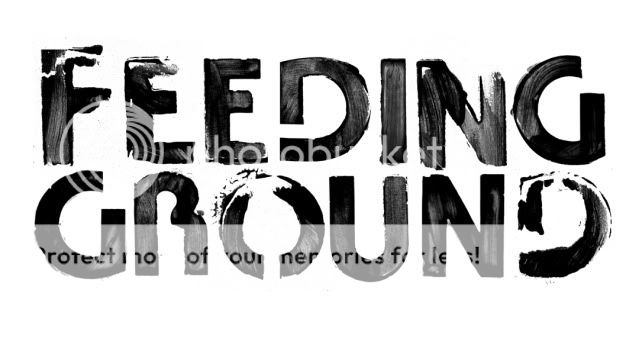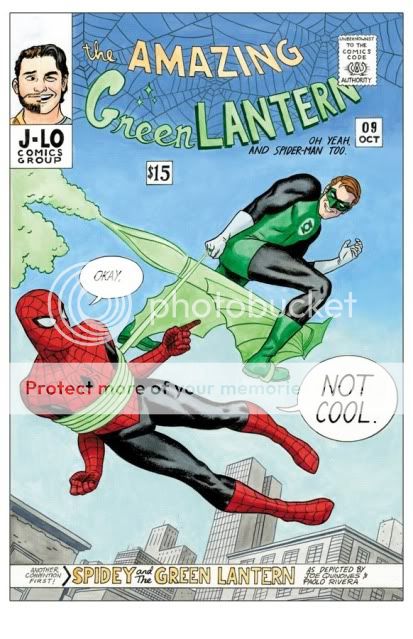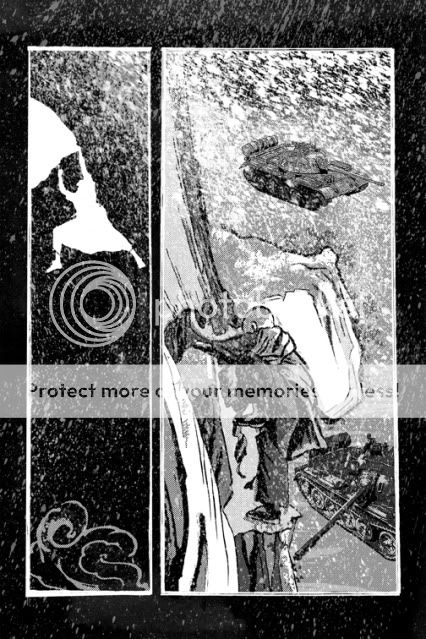
The full package of a comic book is a big marriage between art, story, and design. As much as it is said that making a comic is akin to making a movie, it is also a regular design journal utilizing the trades of poster art composition, font treatment, and logo design. The letterer is typically the invisible hand among already unsung heroes and I don't have enough experience to weigh in on their craft. But, as a freelance designer, I've done my share of logo designs and I've had to bring those skills to branding my own book. Among the professionals plying this trade for comics, it was letterer Todd Klein and his blog Todd's Blog (natch) that proved to be an invaluable resource as I researched the field.
A prodigious talent in his own right, Todd is able to field his work in concert with an encyclopedic survey of its comic ancestors, particularly though his Logo Studies link. His site is not only a catalog of the changing styles and tastes of decades of type design but also of the influence of technology in their creation from the hand drawn through the digital age. Todd is often able to tease the genesis of a design from the working files and feedback from their creators as well as glean their fine art and design influences. It's exciting stuff for anyone who appreciates the craft and energy that define much of comic art.
The logos I've designed in the past usually consisted of a primary image with no text, limited text, or an even integration of the two. Here are some designs I executed for the online shop The Angry Robot, our own Blacklight Comics logo, and the logo for Nickelodeon's "Random! Cartoons."


 But, for the title design of a comic book, the "story" needs to be told through the text itself and in a way that compliments the cover art. The logo also normally needs to perform this function from its allocated perch on the top third of the cover because of the way that most comics are displayed in stores; racked so that overlapping books only allow the tops of the rear books to remain visible. Ideally the title would be an integrated part of the composition but the masthead approach dominates for ease of use.
But, for the title design of a comic book, the "story" needs to be told through the text itself and in a way that compliments the cover art. The logo also normally needs to perform this function from its allocated perch on the top third of the cover because of the way that most comics are displayed in stores; racked so that overlapping books only allow the tops of the rear books to remain visible. Ideally the title would be an integrated part of the composition but the masthead approach dominates for ease of use.Our upcoming mini-series, Feeding Ground, is a present-day horror story situated in the desert. It's visceral and desperate and infuses some nasty creatures into a politically charged environment. The challenge in creating this design has been the need to communicate real world horror without resorting to spooky or gory font treatments. On top of that, there are a whole lot of letters in the title. Over the next few thumbnails, you'll be able to see some of the relationships I've tried to reinforce among the different letterforms.
In my first attempt, I went for communicating a regional identity with the use of a western font. And, well, it seems to Western-y.
 Pulling a 180, I abandoned the use of a decorative font for the more industrial forms you would see on a road sign, communicating travel. Here, I enjoy the interplay between the rounded and edged corners, clean silhouette, and cold uniform spacing. I also roughed it up a bit digitally to distress the outline and give it a pixelated tooth. Here it is in three size variations.
Pulling a 180, I abandoned the use of a decorative font for the more industrial forms you would see on a road sign, communicating travel. Here, I enjoy the interplay between the rounded and edged corners, clean silhouette, and cold uniform spacing. I also roughed it up a bit digitally to distress the outline and give it a pixelated tooth. Here it is in three size variations. Building off of the existing flows of curve and point, I printed this design and then extended some of the ends by hand. This one is starting to feel more self-contained to me, more like a logo than a series of letters. The exaggerated points also add a more sinister intent. The slightest additions changed the overall feel and I found that it helped to look at the reduced thumbnail in my browser rather than get caught up in a 400% magnification of one serif.
Building off of the existing flows of curve and point, I printed this design and then extended some of the ends by hand. This one is starting to feel more self-contained to me, more like a logo than a series of letters. The exaggerated points also add a more sinister intent. The slightest additions changed the overall feel and I found that it helped to look at the reduced thumbnail in my browser rather than get caught up in a 400% magnification of one serif.Check out the subtle change in the anatomy of the F in these two versions, one in which the top arm ends to allow the mind to fill the gap and the second in which I added a point to close off the form and mirror the G. Which do you prefer?

 For the last series in this installment, I wanted to craft a title by hand in order to suggest the self-sustaining, hardscrabble, world our characters inhabit. In general, I prefer it whenever I can craft something outside of the computer as a starting point for any digital manipulation. (I drew the letters on actual ping pong balls for the Random! logo) The subtle fluctuations tend to give any design more life.
For the last series in this installment, I wanted to craft a title by hand in order to suggest the self-sustaining, hardscrabble, world our characters inhabit. In general, I prefer it whenever I can craft something outside of the computer as a starting point for any digital manipulation. (I drew the letters on actual ping pong balls for the Random! logo) The subtle fluctuations tend to give any design more life.As an artmaking packrat, I still have stencils from a little set I received as a kid in the 80s. With a liberal application of fingerpaint, both red paint on a white surface and also white paint on a dark surface, I globbed it up to varying degrees. Here you have a few final thumbnails from clean to jacked to a combination of the two.


 In this case, I discovered that there is an inherent mirroring of the Gs and Ds that I can choose to exploit as well as the prominence of the O and double EEs. Unfortunately, the font itself has a rounded Bauhaus feel that makes the overall design seem "retro" to me.
In this case, I discovered that there is an inherent mirroring of the Gs and Ds that I can choose to exploit as well as the prominence of the O and double EEs. Unfortunately, the font itself has a rounded Bauhaus feel that makes the overall design seem "retro" to me.Some of these are still viable candidates but I've already moved on to a few more approaches to make sure that I've done due diligence to our book. Let me know what's working for you and I'll be updating the process in future installments.













